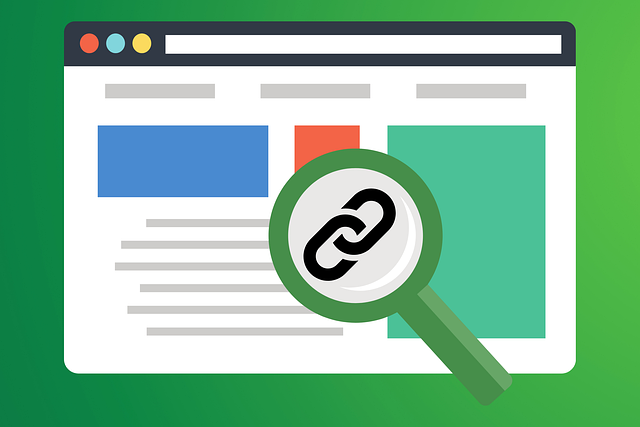Understanding and implementing effective site structure SEO is vital for modern digital success. By organizing pages hierarchically, using descriptive URLs, and establishing a strategic internal linking network, you improve user experience and search engine crawling efficiency. This boosts page authority, keyword targeting, and link equity distribution. Key strategies include creating intuitive content architecture, integrating natural anchor text, and maintaining logical information flow to reduce bounce rates and increase engagement. Regularly reviewing and optimizing site structure through data-driven analytics ensures your website remains competitive, impacting rankings with balanced link distribution and relevant keyword targeting. Mastering internal linking revolutionizes website visibility and performance in the dynamic digital landscape.
In today’s competitive digital landscape, understanding modern SEO practices is paramount for online success. One such powerful strategy, internal linking, plays a pivotal role in enhancing search engine rankings and user experience. This article guides you through the intricacies of leveraging site structure as an effective SEO tool. We’ll explore how to optimize your website’s architecture, implement strategic internal links, measure results, and employ advanced techniques to stay ahead in search engine visibility.
- Understanding Site Structure and Its Role in Modern SEO
- The Impact of Internal Linking on Search Engine Rankings
- Strategies for Creating an Effective Site Structure
- Implementing Internal Links: Best Practices and Tips
- Measuring the Success of Your Site Structure and Internal Linking Strategy
- Advanced Techniques for Optimizing Internal Links
Understanding Site Structure and Its Role in Modern SEO

Understanding a website’s site structure is paramount for implementing effective modern SEO strategies. A well-organized site structure acts as the backbone of any digital platform, enabling both users and search engines to navigate content effortlessly. By arranging pages hierarchically, using logical URLs, and creating a clear internal linking network, you optimize the user experience and make it easier for search algorithms to crawl and index your website effectively.
This strategic approach has significant implications for SEO. A robust site structure enhances page authority, as relevant links within your site pass on value and context, leading to better keyword targeting and improved rankings. Moreover, it aids in spreading link equity across different pages, ensuring that valuable backlinks contribute positively to the overall SEO performance. When implementing site structure SEO tips, focus on creating a clean, intuitive architecture that reflects the information hierarchy of your content, thereby boosting both user engagement and search engine visibility.
The Impact of Internal Linking on Search Engine Rankings

Internal linking plays a pivotal role in enhancing your site’s structure SEO and overall search engine rankings. By strategically linking relevant pages within your website, you create a clear hierarchy and guide both users and search engines through your content. This simple yet powerful technique allows search algorithms to understand your site’s topical relevance and navigate through it more efficiently.
A well-executed internal linking strategy involves using relevant anchor text that accurately reflects the linked page’s content, integrating natural links within your copy, and ensuring a logical flow of information. When implemented correctly, these site structure SEO optimization tips can lead to improved crawlability, reduced bounce rates, and increased time spent on site—all factors that search engines consider when ranking pages. As a result, you’ll see better visibility in search results and attract more qualified leads through effective site structure SEO tactics.
Strategies for Creating an Effective Site Structure

A well-organized site structure is a cornerstone of effective SEO strategies. To optimize this aspect, begin by creating a clear hierarchy using logical and user-friendly URLs. Categorize content into relevant sections and subsections, ensuring each page has a distinct purpose and targets specific keywords. This approach not only enhances usability but also signals to search engines the importance of different pages within your site.
Implementing interlinking between these pages is key in a site structure SEO tutorial. Strategically place internal links to related content, allowing users and search algorithms to navigate seamlessly across your site. Consider using anchor text that includes relevant keywords for better SEO optimization. This practice improves crawlability, reduces bounce rates, and encourages deeper engagement with your content, ultimately contributing to improved rankings in search engine results pages (SERPs).
Implementing Internal Links: Best Practices and Tips

Implementing internal links is a crucial aspect of modern SEO practices that can significantly enhance your site’s visibility and user experience. A well-structured internal linking strategy leverages your site’s architecture to guide users and search engines alike, ensuring key pages gain the authority they deserve. When integrating internal links, remember that relevance is key; link to pages that offer substantial value to visitors based on their context or intent. For instance, if a user is deeply engaged with your content about SEO best practices, linking them to another article delving into advanced techniques can be highly beneficial.
To optimize your site structure for SEO, consider using anchor text wisely—it should accurately represent the linked page’s content. Additionally, maintaining a logical hierarchy through internal links allows search engines to understand your site’s organization, making it easier for them to index and rank your pages. Regularly review and update your internal linking strategy, as it’s an ongoing process that requires adaptability to evolving user preferences and search engine algorithms. Embrace a data-driven approach, utilizing analytics tools to identify high-performing pages and those in need of linking support, ensuring your site structure SEO strategy remains robust and effective.
Measuring the Success of Your Site Structure and Internal Linking Strategy

Measuring the success of your site structure and internal linking strategy is paramount to understanding its effectiveness in boosting SEO. By utilizing analytics tools, you can track user behavior, identify high-performing pages, and uncover areas for improvement. Key metrics include bounce rate, time spent on page, and click-through rates from internal links. These insights allow you to optimize your site structure by reorganizing content, improving keyword targeting, and enhancing internal linking patterns.
Regularly reviewing and refining your site structure SEO optimization strategies ensures your website remains competitive in a dynamic digital landscape. Incorporating these SEO tips—like ensuring logical page hierarchy, using anchor text effectively, and maintaining a balanced distribution of internal links—can significantly impact your search engine rankings.
Advanced Techniques for Optimizing Internal Links

In the realm of modern SEO practices, mastering internal linking strategies is key to enhancing site structure SEO. One advanced technique involves creating a hierarchical link structure that mirrors the logical flow of your content. This ensures search engines understand your website’s organization and context, boosting both user experience and rankings. By strategically placing internal links within relevant content, you can guide users and search algorithms through your site efficiently.
Utilize anchor text wisely to make these internal links more meaningful. Incorporate keywords naturally in the link text, reflecting the topic of the linked page. This practice not only improves SEO optimization but also enhances click-through rates as users are more likely to engage with links that offer relevant, valuable content. For a comprehensive site structure SEO tutorial, consider implementing these tips to revolutionize your website’s visibility and performance in today’s digital era.
